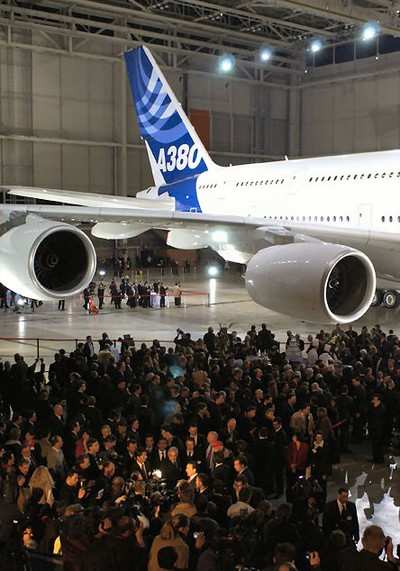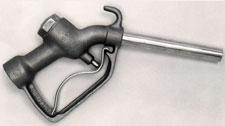Wed, Sep 21, 2005
Fare Wars, Oil Prices Cause Major Concern For Carriers,
Subcontractors
 Faced with structural growth in air
traffic, increased competition, price pressure, and the rise in oil
prices, the airline industry is facing new challenges that are
hurting carriers and subcontractors, according to a study by global
trade credit insurer Euler Hermes. However, the effects are widely
varied between aircraft manufacturers and the airlines
themselves.
Faced with structural growth in air
traffic, increased competition, price pressure, and the rise in oil
prices, the airline industry is facing new challenges that are
hurting carriers and subcontractors, according to a study by global
trade credit insurer Euler Hermes. However, the effects are widely
varied between aircraft manufacturers and the airlines
themselves.
Economists and trade credit insurance experts from Euler Hermes
– the world's leading provider of trade credit insurance and
risk management information – studied the profitability
outlook and claims experience for the various industry players.
Euler Hermes has determined that the aircraft manufacturing sector
seems to be the only portion of the airline industry that is
experiencing success, with overflowing order backlogs. Meanwhile,
the airlines – and, subsequently in a domino effect, the
subcontractors working for the airlines – have been
weakened.
Major airlines have been weakened by the increasing success of low
cost carriers and rising oil prices. The major carriers have been
under pressure, despite the strong upturn in air traffic since 2003
and a forecast rise over the next 20 years boosted by growth in
Asia. Worldwide growth in the number of low cost airlines has
especially hurt the large US carriers.

According to Euler Hermes, the low cost airlines have a more
efficient cost structure and are more easily able to offer
competitive rates while keeping sufficient profit margins. Discount
carriers have increased their US market share from 4% at the
beginning of 1990 to 12.5% in 2001 and 18% in 2003. Euler Hermes
estimates that in 2005, the total market share for the low cost
carriers will reach 25%, with a 40% market share expected by 2014.
Meanwhile, fare prices have tumbled by nearly a third over the past
10 years.
"In the US, we have seen the discount carriers come on very strong
in the past few years, both in price pressure and market share,"
said Lynne Borkowski, Euler Hermes ACI Risk Underwriting Vice
President. "The major airlines, which were already shaken by the
competition from their low cost rivals and high labor costs, are
now faced with significantly higher oil prices. This has led
several of the major carriers to seek bankruptcy protection and
reorganization."
The increase in oil prices has been strong over the past three
years: +20.4% in 2003, +38% in 2004, and +56% in 2005.
Consequently, the airlines have seen their oil costs rise to nearly
double the level from three years ago. In 2006, the average price
of a barrel of oil will decrease to an estimated $48 in view of a
global slowdown, resulting in slightly lower fuel bills. The impact
is expected to provide a slower decrease in the price of jet
fuel.
 Aircraft manufacturers have
protected their satisfactory profit margins due to better cost
control. Despite a sharp fall in business between 2001 and 2004
– which is amplified for North American manufacturers by the
euro/dollar exchange rate -– the main jet makers succeeded in
maintaining satisfactory margins due to better cost control. Boeing
has also helped its profitability through its military
manufacturing commitments.
Aircraft manufacturers have
protected their satisfactory profit margins due to better cost
control. Despite a sharp fall in business between 2001 and 2004
– which is amplified for North American manufacturers by the
euro/dollar exchange rate -– the main jet makers succeeded in
maintaining satisfactory margins due to better cost control. Boeing
has also helped its profitability through its military
manufacturing commitments.
Having hit a low in 2003 with only 586 planes delivered, the two
main manufacturers -– Airbus and Boeing –- should
increase deliveries by 38% and 48% respectively between 2004 and
2007.
Equipment manufacturers also have good prospects, since they
specialize in niche markets and are bolstered by a profitable
maintenance business that cushions them from the shock of downturns
in the general economy. Some have also chosen to expand operations
via acquisitions, given that the market is still fragmented.
More News
Aero Linx: International Flying Farmers IFF is a not-for-profit organization started in 1944 by farmers who were also private pilots. We have members all across the United States a>[...]
From 2017 (YouTube Version): Remembrances Of An Israeli Air Force Test Pilot Early in 2016, ANN contributor Maxine Scheer traveled to Israel, where she had the opportunity to sit d>[...]
"We renegotiated what our debt restructuring is on a lot of our debts, mostly with the family. Those debts are going to be converted into equity..." Source: Excerpts from a short v>[...]
Also: B-29 Superfortress Reunion, FAA Wants Controllers, Spirit Airlines Pulls Back, Gogo Galileo Van's Aircraft posted a short video recapping the goings-on around their reorganiz>[...]
Chart Supplement US A flight information publication designed for use with appropriate IFR or VFR charts which contains data on all airports, seaplane bases, and heliports open to >[...]
 ANN's Daily Aero-Linx (04.15.24)
ANN's Daily Aero-Linx (04.15.24) Classic Aero-TV: 'No Other Options' -- The Israeli Air Force's Danny Shapira
Classic Aero-TV: 'No Other Options' -- The Israeli Air Force's Danny Shapira Aero-News: Quote of the Day (04.15.24)
Aero-News: Quote of the Day (04.15.24) Airborne 04.16.24: RV Update, Affordable Flying Expo, Diamond Lil
Airborne 04.16.24: RV Update, Affordable Flying Expo, Diamond Lil ANN's Daily Aero-Term (04.16.24): Chart Supplement US
ANN's Daily Aero-Term (04.16.24): Chart Supplement US





